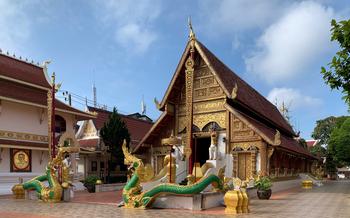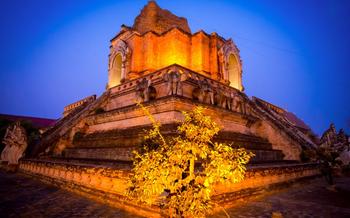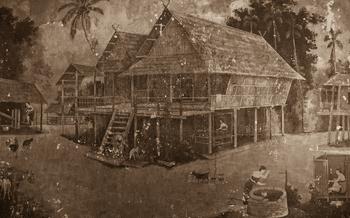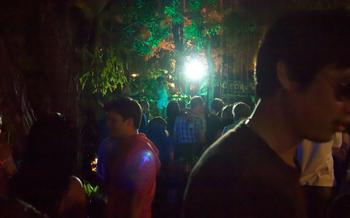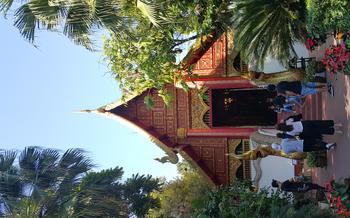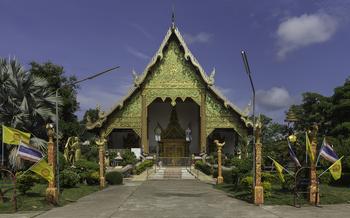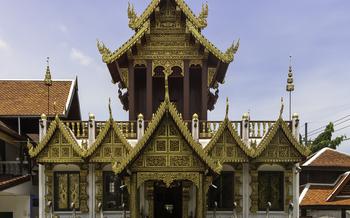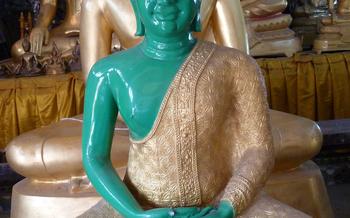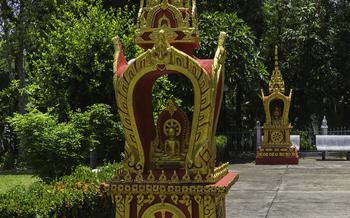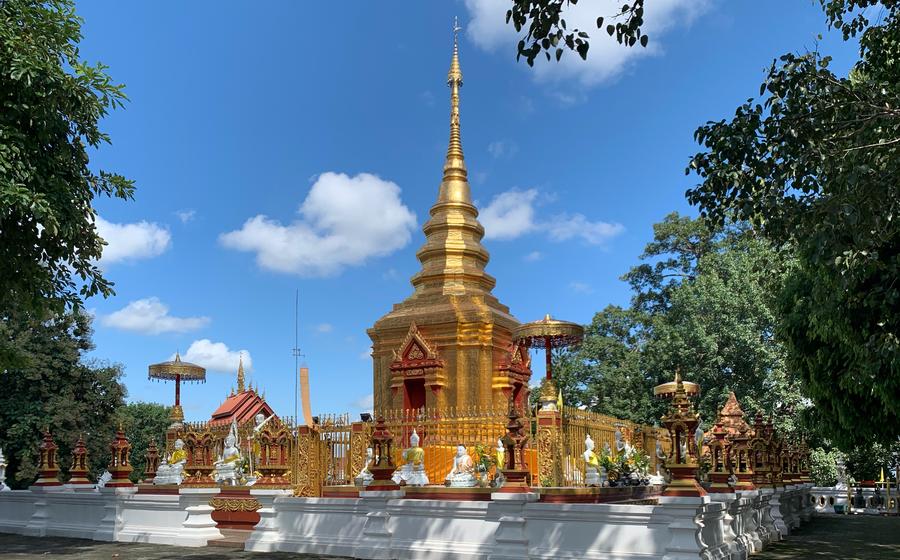
Doi Wao & Wat Thamphajoen
- Doi Wao: A Stunning Hilltop Temple Complex
- Wat Thamphajoen: A Unique Temple with a Maze-Like Structure
- History and Origin of the Temple
- Unique Maze-Like Design and Layout
- Interesting Features and Highlights of the Temple
- Tips for Exploring the Temple Maze
- Exploring the Buddha Image at Doi Wao
- History and Cultural Significance of Doi Wao
- Wat Thamphajoen's Artistic Details and Symbolism
- The Spiritual Significance of Doi Wao
- Exploring the Surrounding Area of Doi Wao
- Experiencing the Local Flavors near Wat Thamphajoen
- Getting to Doi Wao and Wat Thamphajoen
- Accommodation Options near Doi Wao and Wat Thamphajoen
- Homestays and Guesthouses:
- Nearby Hotels and Resorts:
- Tips for Booking Accommodation:
- Insider Tip:
- Best Time to Visit Doi Wao and Wat Thamphajoen
- Exploring the Buddha's Footprint at Doi Wao
- Wat Thamphajoen's Unique Architecture and Design
- The Spiritual Practices at Doi Wao and Wat Thamphajoen
- Insider Tip: Hidden Gems near Doi Wao and Wat Thamphajoen
Doi Wao: A Stunning Hilltop Temple Complex
Doi Wao, nestled amidst the picturesque hills of Chiang Rai, stands as a testament to the region's rich religious history and architectural prowess. This hilltop temple complex, dating back to the 13th century, is renowned for its historical significance, intricate architecture, and breathtaking panoramic vistas.
The temple holds a prominent place in the annals of Chiang Rai, having been constructed during the reign of King Mangrai, the city's founder. Its construction marked a pivotal moment in the development of Lanna culture, and it remains a revered site for both locals and visitors alike.
Doi Wao's architectural features are a harmonious blend of Lanna and Burmese styles, showcasing the region's diverse cultural influences. The temple's ornate stupas, intricate carvings, and graceful chedis create a captivating visual spectacle, drawing visitors from far and wide.
One of the highlights of Doi Wao is the breathtaking panoramic view it offers from its elevated location. Visitors can enjoy sweeping vistas of the surrounding hills, lush forests, and the distant city of Chiang Rai, making it a perfect spot to capture stunning photographs and soak in the tranquility of the natural surroundings.
To fully experience the magic of Doi Wao, it is advisable to plan your visit during the early morning hours or late afternoon to avoid the midday heat and capture the most favorable lighting conditions for photography. Remember to dress respectfully and observe local customs, such as removing your shoes before entering the temple grounds.
Wat Thamphajoen: A Unique Temple with a Maze-Like Structure
Wat Thamphajoen, also known as the "Temple of the Thousand Steps," is a unique and intriguing temple located in Chiang Rai, Thailand. Its most distinctive feature is its maze-like structure, which creates a sense of mystery and wonder as visitors navigate its winding paths.
History and Origin of the Temple
Wat Thamphajoen was constructed in 1958 by a revered monk named Phra Kru Ba Srivichai. The temple's unique design was inspired by his desire to create a place where people could meditate and find spiritual enlightenment. The intricate maze-like structure symbolizes the journey that one must undertake to reach inner peace and wisdom.
Unique Maze-Like Design and Layout
The temple's layout is a labyrinth of interconnected tunnels, stairs, and platforms that lead visitors through a series of chambers and meditation spaces. The maze-like design is intended to represent the challenges and obstacles that one may encounter on the path to spiritual enlightenment.
Interesting Features and Highlights of the Temple
In addition to its maze-like structure, Wat Thamphajoen is home to several interesting features and highlights. These include a large Buddha image, a collection of Buddhist relics, and a meditation center. Visitors can also climb to the temple's rooftop for stunning views of the surrounding countryside.
Tips for Exploring the Temple Maze
To fully experience the magic of Wat Thamphajoen, it is recommended to take your time exploring the temple maze. Be prepared to get lost and wander around, as part of the experience is the journey itself. It is also advisable to wear comfortable shoes, as there are many steps to climb.
Exploring the Buddha Image at Doi Wao
The Buddha image at Doi Wao is a revered and awe-inspiring sight, attracting pilgrims and visitors from around the world. Carved from a single block of white jade, the Buddha exudes an aura of serenity and compassion, captivating all who gaze upon it.
The artistic features of the Buddha image are simply breathtaking. Intricate carvings adorn the Buddha's robes, showcasing the exceptional craftsmanship and attention to detail of the ancient artisans. The Buddha's serene expression, delicate hands, and graceful posture convey a sense of profound peace and tranquility.
The story behind the creation of the Buddha image is equally fascinating. Legend has it that a young monk, driven by an unwavering devotion to Buddha, embarked on a perilous journey to find the perfect jade stone for carving the image. After years of searching, he finally discovered the ideal stone in a remote mountain cave, where it had been hidden for centuries.
To capture the best photographs of the Buddha image, it is advisable to visit Doi Wao during the early morning or late afternoon, when the natural light illuminates the Buddha's features most effectively. Tripod usage is recommended to ensure sharp and steady shots.
History and Cultural Significance of Doi Wao
Doi Wao's construction in the 17th century marked a significant period in the history of Chiang Rai. The temple, built by a local ruler, served as a prominent religious center for the Tai Lue community, who played a crucial role in the region's cultural and economic development. The architectural style of Doi Wao reflects the unique blend of Lanna and Burmese influences, showcasing the diversity of cultural influences in the area.
The temple holds deep cultural significance for the local communities, who consider it a sacred site and a symbol of their heritage. The intricate carvings, murals, and Buddha images within the temple depict stories from Buddhist mythology and folklore, providing a glimpse into the rich cultural traditions of the region. Visitors to Doi Wao can immerse themselves in the local culture by participating in religious ceremonies and festivals held at the temple, experiencing firsthand the vibrant spiritual traditions of the Tai Lue people.
To fully appreciate the cultural context of Doi Wao, it is recommended to engage with local guides or participate in guided tours. These guides can provide insights into the historical significance, symbolism, and cultural practices associated with the temple, enhancing the overall experience for visitors.
Wat Thamphajoen's Artistic Details and Symbolism
Wat Thamphajoen's artistic details and symbolism are a testament to the creativity and spirituality of its builders. The temple's intricate carvings, colorful murals, and unique architectural features all hold deep meaning and significance.
For example, the temple's maze-like layout is said to represent the path to enlightenment, with each twist and turn symbolizing the challenges and obstacles one must overcome on their spiritual journey.
The temple's many Buddha images, each with its own unique features and expressions, represent the different aspects of the Buddha's teachings. The temple's intricate carvings also depict scenes from the Buddha's life and stories from Thai mythology, providing visitors with a visual representation of the temple's teachings.
By understanding the symbolism and artistic details of Wat Thamphajoen, visitors can gain a deeper appreciation for the temple's beauty and its role in Thai culture.
- Tip: Be sure to take your time exploring the temple and pay attention to the small details. You'll be amazed at the intricate carvings and artwork that can be found throughout the temple.
The Spiritual Significance of Doi Wao
Doi Wao holds immense spiritual significance for the local communities and visitors alike. It serves as a sacred place of worship and meditation, attracting pilgrims and devotees from near and far. The temple's serene atmosphere and stunning surroundings provide an ideal setting for spiritual contemplation and inner peace.
Religious Ceremonies and Rituals:
Throughout the year, Doi Wao hosts various religious ceremonies and rituals that draw a large number of participants. These events showcase the rich cultural heritage and deep-rooted spiritual beliefs of the local people. Visitors are welcome to observe and participate in these ceremonies, gaining insights into the local religious practices.
Significance for Local Communities:
Doi Wao plays a crucial role in the lives of the local communities, serving as a spiritual and cultural hub. It is a place where people come together to pray, seek guidance, and connect with their faith. The temple's teachings and rituals help to strengthen the bonds within the community and promote a sense of harmony and unity.
Tips for Respecting Local Customs and Traditions:
When visiting Doi Wao, it is essential to be respectful of local customs and traditions. Visitors should dress modestly and behave appropriately within the temple grounds. It is important to seek permission before taking photographs or filming, and to avoid disturbing ongoing religious ceremonies.
Exploring the Surrounding Area of Doi Wao
Beyond the temple grounds, the natural beauty of the surrounding area invites further exploration. Take a leisurely stroll through the lush forests, admiring the diverse flora and fauna. The serene atmosphere provides a tranquil escape from the hustle and bustle of city life. Discover hidden waterfalls, cascading down rocky cliffs, creating a symphony of sound that echoes through the valley.
For the adventurous, embark on a challenging hike or trek through the surrounding hills. Trails of varying difficulty levels offer breathtaking panoramic views of the region. Witness the stunning sunset as the sky transforms into a canvas of vibrant colors, casting a warm glow over the landscape.
Venture into local villages and communities nestled amidst the tranquil countryside. Interact with friendly locals, learn about their way of life, and immerse yourself in the rich cultural heritage of the region. Discover local markets where you can find fresh produce, handmade crafts, and delicious street food, providing a taste of authentic Thai cuisine.
Tips for Combining Nature Exploration with Temple Visits:
-
Plan your visit during the cooler months (November to February) to avoid the intense heat and humidity.
-
Wear comfortable shoes suitable for walking or hiking on uneven terrain.
-
Bring along a hat, sunglasses, and sunscreen to protect yourself from the sun.
-
Carry a water bottle to stay hydrated during your explorations.
-
Respect the local customs and traditions by dressing modestly and behaving respectfully.
Experiencing the Local Flavors near Wat Thamphajoen
To experience the authentic flavors of Chiang Rai, venture into the local markets and street food stalls near Wat Thamphajoen. Immerse yourself in the vibrant atmosphere as you explore the array of local delicacies, from savory grilled meats to mouthwatering curries. Don't miss the chance to try "khao soi," a signature northern Thai dish featuring rich coconut curry broth, tender noodles, and crispy toppings. For a sweet treat, indulge in "khanom chin nam ngiao," a refreshing dessert made with fermented rice noodles and sweet coconut cream. Remember to be adventurous and ask the friendly locals for recommendations on must-try dishes. Embrace the opportunity to connect with the local culture through its culinary delights.
Getting to Doi Wao and Wat Thamphajoen
Doi Wao and Wat Thamphajoen are located about 25 kilometers from Chiang Rai city center. To reach them, you can either rent a motorbike or hire a taxi.
Renting a motorbike is a great way to explore the surrounding countryside at your own pace. Motorbikes can be rented from numerous shops in Chiang Rai, and the cost typically ranges from 200 to 300 baht per day. Be sure to wear a helmet and drive carefully, as the roads in Thailand can be busy and chaotic.
Hiring a taxi is a more convenient option if you prefer not to drive yourself. Taxis can be hired for a half-day or full-day trip, and the cost typically ranges from 1,000 to 1,500 baht. Be sure to agree on a price before getting in the taxi.
Whether you choose to rent a motorbike or hire a taxi, allow plenty of time for your journey. The roads to Doi Wao and Wat Thamphajoen are winding and mountainous, and the trip can take up to an hour.
Once you arrive at Doi Wao or Wat Thamphajoen, you'll need to pay a small entrance fee. The fee is typically around 50 baht per person. Be sure to have cash on hand, as credit cards are not accepted.
It's best to plan a day trip to Doi Wao and Wat Thamphajoen. This will give you enough time to explore both temples and enjoy the surrounding scenery. If you have more time, you can also stay overnight in one of the nearby guesthouses or homestays.
To avoid crowds, try to visit Doi Wao and Wat Thamphajoen early in the morning or late in the afternoon. The temples are typically busiest between 10 am and 2 pm.
Accommodation Options near Doi Wao and Wat Thamphajoen
When planning your trip to Doi Wao and Wat Thamphajoen, finding suitable accommodation is crucial for a comfortable and enjoyable experience. Here are some options to consider:
Homestays and Guesthouses:
- Embrace local culture by staying in a homestay or guesthouse near the temples.
- Enjoy authentic Thai hospitality and immerse yourself in the local way of life.
- Budget-friendly options with basic amenities and a chance to interact with locals.
Nearby Hotels and Resorts:
- Opt for a comfortable stay in nearby hotels or resorts for a more luxurious experience.
- Amenities like swimming pools, spas, and restaurants cater to your needs.
- Conveniently located, offering easy access to the temples and other attractions.
Tips for Booking Accommodation:
- Book your accommodation in advance, especially during peak tourist seasons.
- Consider factors like location, budget, and desired amenities when choosing your stay.
- Look for homestays or guesthouses that offer unique experiences like cooking classes or guided tours.
Insider Tip:
- Explore local villages for budget-friendly guesthouses that provide a glimpse into rural Thai life.
- Ask locals for recommendations on hidden gems and lesser-known accommodations.
Best Time to Visit Doi Wao and Wat Thamphajoen
The best time to visit Doi Wao and Wat Thamphajoen is during the cool and dry season, which runs from November to March. During this time, the weather is pleasant and sunny, providing ideal conditions for exploring the temples and enjoying the surrounding natural beauty.
Plan your visit during the Loy Krathong and Yi Peng festivals, held annually in November, to witness spectacular lantern releases and floating lanterns illuminating the night sky.
Avoid the rainy season, which lasts from July to October, as heavy rainfall can make it challenging to explore the temples and surrounding areas.
Insider Tip: For an unforgettable experience, visit the temples during the Chiang Rai Flower Festival, held annually in February, when the city is adorned with colorful flowers and vibrant decorations, creating a magical ambiance.
Exploring the Buddha's Footprint at Doi Wao
The Buddha's footprint at Doi Wao is a sacred and revered site for Buddhist pilgrims and visitors alike. According to legend, the footprint was left by the Buddha himself during his travels through the region. It is believed to have miraculous powers and is a symbol of his presence and blessings.
The footprint is located within a small shrine on the temple grounds. It is a large and well-preserved imprint, measuring over a meter in length. The toes are clearly visible, and the footprint is surrounded by intricate carvings and designs.
Visitors to Doi Wao can pay their respects to the Buddha's footprint by offering prayers and making offerings. It is considered auspicious to touch the footprint and to make a wish. The shrine is a peaceful and serene place, and it is a popular spot for meditation and contemplation.
For those interested in photography, the Buddha's footprint is a beautiful and unique subject. The intricate carvings and the natural light filtering through the shrine create a stunning visual effect.
Tips for photographing the Buddha's footprint:
- Use a wide-angle lens to capture the entire footprint and the surrounding shrine.
- Experiment with different angles and perspectives to create interesting compositions.
- Use natural light to create soft and flattering shadows.
- Avoid using flash, as it can create harsh reflections on the footprint's surface.
- Be respectful of the religious significance of the site and avoid disturbing other visitors.
Wat Thamphajoen's Unique Architecture and Design
Wat Thamphajoen stands out with its distinctive architectural features, a harmonious blend of traditional Lanna and modern elements. The temple's main structure, the ubosot, is adorned with intricate carvings depicting scenes from the life of Buddha and mythological creatures. The roof, supported by massive pillars, features intricate designs and colorful ceramic tiles, a hallmark of Lanna architecture.
One unique aspect of Wat Thamphajoen is its use of colorful glass mosaics to decorate the exterior walls. These mosaics depict various Buddhist motifs, including lotus flowers, celestial beings, and scenes from the Jataka tales. The vibrant colors and intricate patterns create a mesmerizing effect, transforming the temple into a work of art.
The temple also features a large stupa, or chedi, which houses relics of the Buddha. The chedi is surrounded by a series of smaller stupas, each with a unique design. The stupas are adorned with intricate carvings and colorful tiles, contributing to the temple's overall aesthetic appeal.
The Spiritual Practices at Doi Wao and Wat Thamphajoen
Beyond their historical and architectural significance, Doi Wao and Wat Thamphajoen are important centers for spiritual practices and meditation. Local monks conduct daily ceremonies and rituals, offering visitors a glimpse into the rich spiritual traditions of Thailand. Visitors are welcome to participate in these ceremonies, learning about Buddhist teachings and practices. Guided meditation sessions are also available, providing a peaceful and serene environment for introspection and self-discovery.
For those interested in delving deeper into their spiritual journey, Doi Wao and Wat Thamphajoen offer unique opportunities for personal growth and enlightenment. Visitors can engage in silent meditation retreats, spending several days immersed in contemplation and self-reflection. These retreats are led by experienced meditation masters, who guide participants through various techniques and practices.
To ensure a respectful and meaningful experience, visitors are advised to dress modestly and adhere to local customs when visiting the temples. It is also important to maintain silence and refrain from disruptive behavior, creating a conducive environment for spiritual practices.
Insider Tip: Hidden Gems near Doi Wao and Wat Thamphajoen
Beyond the famous Doi Wao and Wat Thamphajoen, Chiang Rai offers a treasure trove of hidden gems waiting to be explored. For those seeking a more off-the-beaten-path experience, here are a few insider tips:
-
Wat Huay Pla Kung: Discover this serene temple adorned with thousands of ceramic fish tiles, creating a unique and colorful spectacle.
-
Choui Fong Tea Plantation: Immerse yourself in the picturesque landscapes of this tea plantation, where you can learn about tea cultivation and indulge in a refreshing cup of locally grown tea.
-
Singha Park: Explore this vast park, home to a stunning lake, lush gardens, and a variety of outdoor activities, including zip-lining and boating.
-
Mae Salong Village: Experience the rich cultural heritage of this former Chinese settlement, known for its distinct architecture, delicious cuisine, and breathtaking mountain views.
-
Pha Hi Waterfall: Escape the crowds and find tranquility at this hidden waterfall, surrounded by lush jungle scenery and offering a refreshing dip in its cool waters.
Remember, the true beauty of Chiang Rai lies not only in its famous attractions but also in its hidden gems. Venture off the beaten path and embrace the opportunity to discover these unique and enchanting places.
